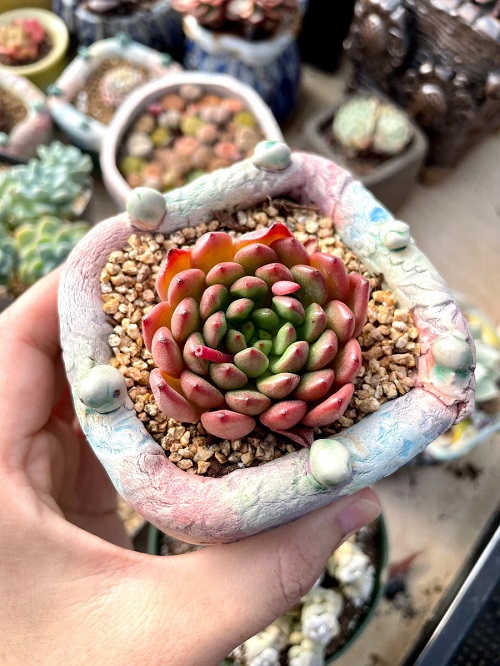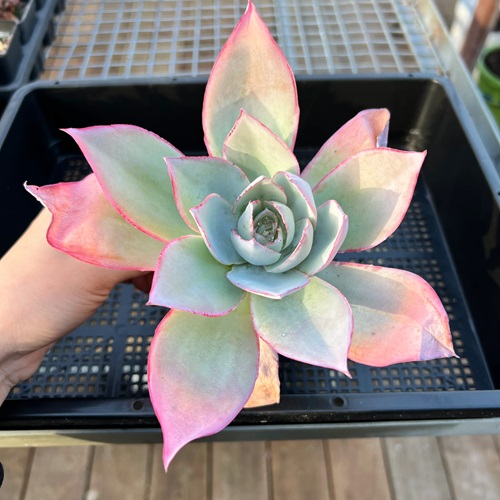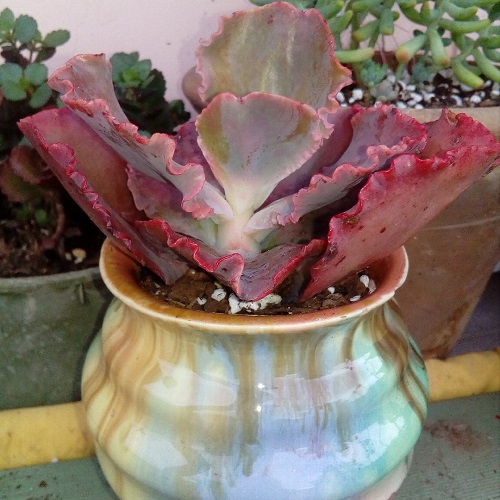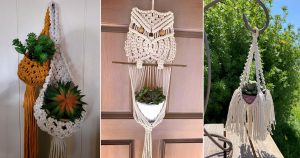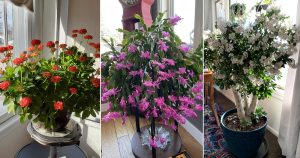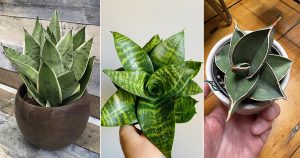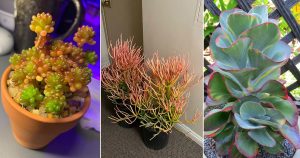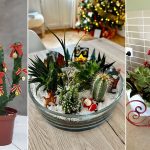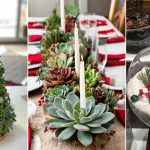Lively gardens make their way to the hearts of all nature admirers! So, to put more life into them, why not add colorful succulents, too?
Colors are an integral part of our lives. We all like colorful decorations, surroundings, and all kinds of celebrations! Moreover, the way colors can bring life to any ordinary painting similarly, they can give warmth and happiness to one’s garden. So, if you want a beautiful garden try adding some colorful succulents from this list!
Mind-blowing Colorful Succulent Plants
1. Sticks on Fire or Pencil Cactus
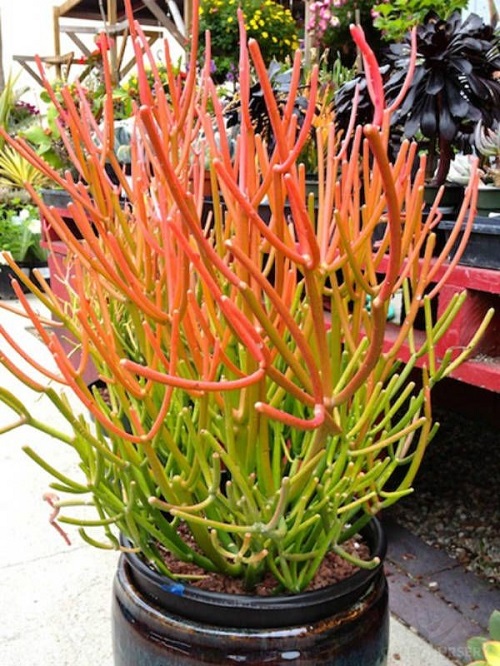
Botanical Name: Euphorbia tirucalli ‘Rosea’
Majorly popular for its feisty, fiery, and vibrant stems that range from yellow to red color. The best feature about Pencil Cactus is it changes its color and turns totally red in winters. However, it needs occasional trimming and long hours of sunlight and this colorful succulent will thrive forever!
Note: This plant contains a milky sap that can be highly irritating to skin and eyes, so handle it with care.
2. Santa Rita Prickly Pear
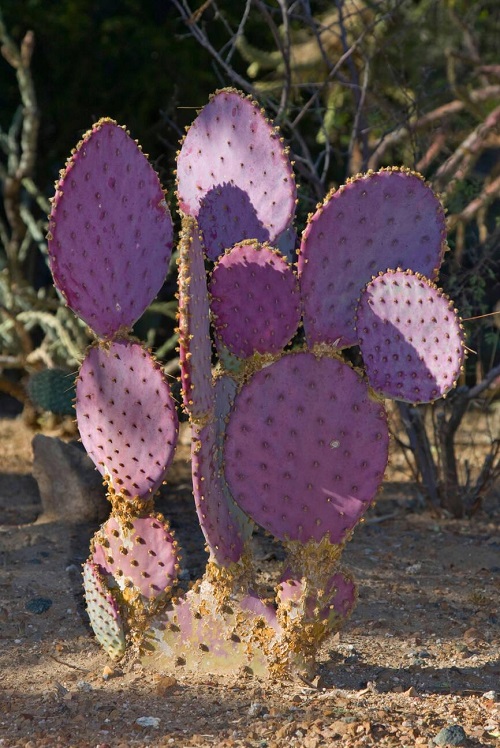
Botanical Name: Opuntia santa-rita
The Santa Rita Prickly Pear is a rare cactus that has flat, round pads that turn a striking reddish-purple and can grow up to eight inches. Plus, the color becomes more bright when it’s stressed by cold or drought. In summer, the pads soften to a bluish-gray shade.
The spines on this plant can cause skin irritation, so it’s best to wear gloves when handling it.
3. Sunburst Aeonium
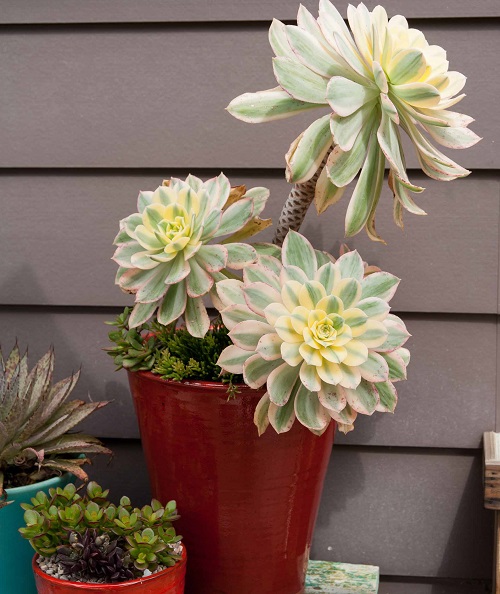
Botanical Name: Luteovariegatum
Adorable bright Suns slaying on Earth! The Sunburst Aeoniums are lustrous medium to big succulents with a fantastic combination of yellow, green, and Pink edges. Overall, they live up to its name with rosettes of variegated leaves, displaying green centers that fade to cream and are edged in bright yellow.
4. Zebra Plant
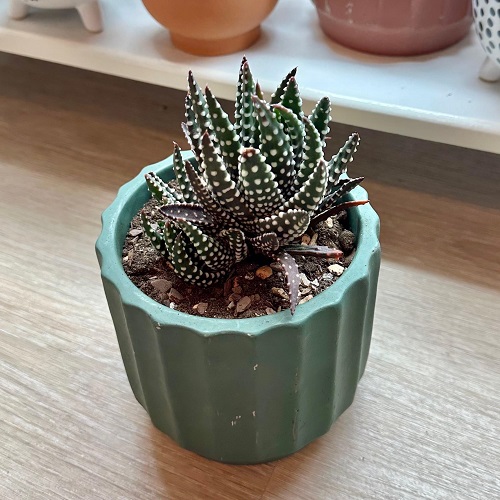
Botanical Name: Haworthiopsis fasciata
Have you seen this rare succulent? It is certainly the best tabletop piece for your study table with its white beaded stripes in its pointy dark green leaves. Lastly, it is native to South Africa and lives for around 50 years with fairly low maintenance.
5. Variegated Haworthia limifolia
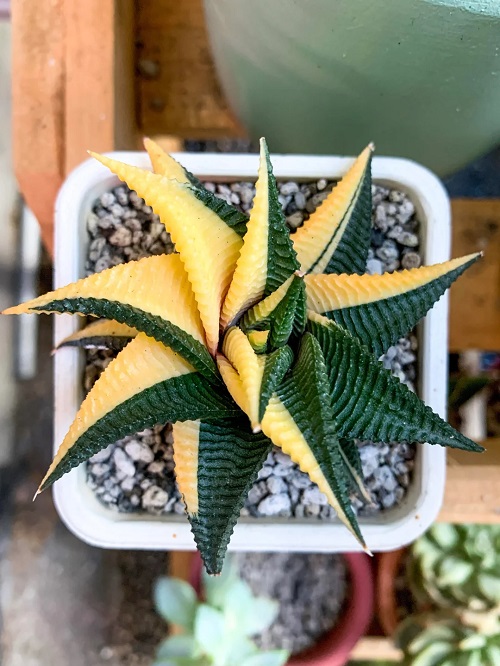
Botanical Name: Haworthia limifolia ‘variegated’
Amazingly structured or say the symmetrical color pattern of this succulent is what makes it so unique and popular but it is a rare one, too! This is a variegated Haworthia species, so it also originates from South Africa. Sophisticatedly combined with yellow and green colors this succulent is well-loved by all gardeners.
6. Black Beauty Aeonium

Botanical Name: Aeonium arboreum ‘Zwartkop’
The most evergreen black succulent on the list. This plant is tremendously wonderful because of the rosette pattern of its leaves and the color variation of light green-red-dark, red-black from the center to the edges is an amazing sight.
You can’t stop looking at it and honestly, it captivates your eyes! If you are planning to add one of these among the greens, then you should go for it. Overall, they grow up to a height of 3-4 feet and 2 feet wide in sandy dry areas.
7. Echeveria Black Prince
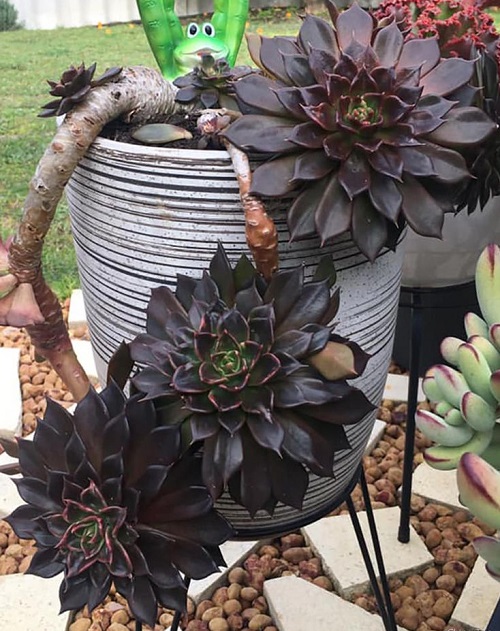
Botanical Name: Echeveria ‘Black Prince’
Don’t get confused with the Black Aeoniums! These are Echeverias although look similar, along with the same color patterns. Besides, Black Prince is suitable for rock garden decorations with light-colored rocks and pebbles.
8. Briar Rose Echeveria
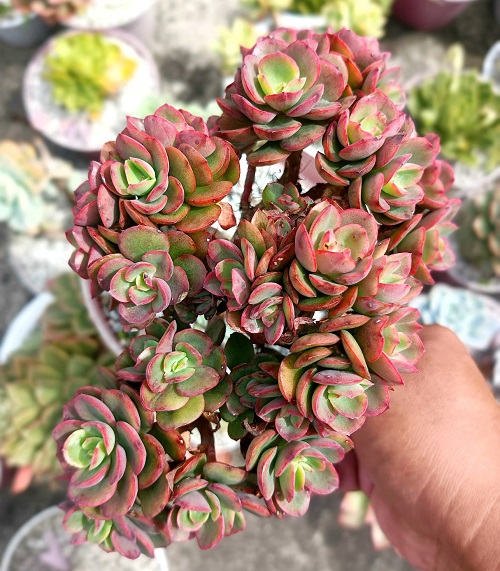
Botanical Name: Echeveria Briar Rose f. cristata
Pastel or Pink lovers are going to love these beauties. Briar Rose Echeverias are hybrid succulents, with pink color on the edges and underneath the leaves whereas pastel green on the crests. The leaves are clumped into a rosette pattern altogether and bloom bell-shaped, pink-red, and yellow flowers during the winter.
9. Chroma
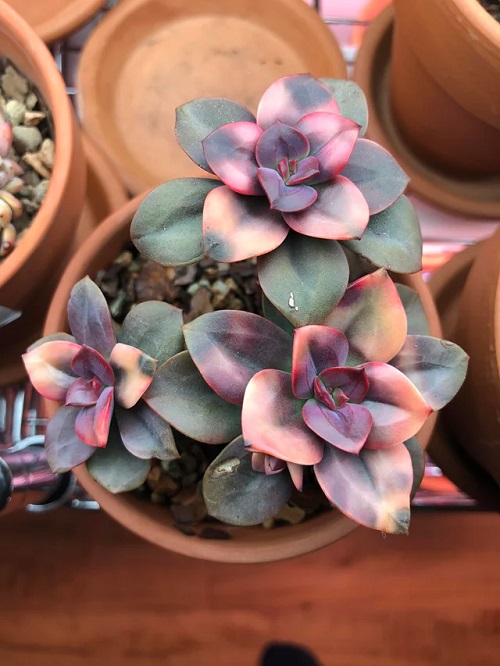
Botanical Name: Echeveria chroma
Chroma succulents are Echeveria-like succulents. Most popular for use as wedding gifts. These Echeveria are hybrid succulents too, originating in California.
10. Living Stones
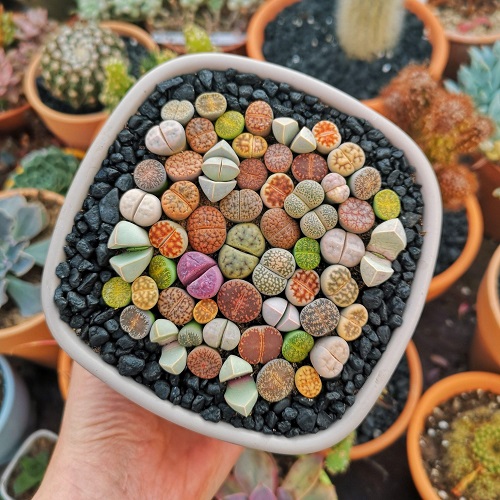
Botanical Name: Lithops species
Cute little colorful pebbles on the ground! According to many observers, these succulents appear to resemble many things like lips, eyes, brain, butts, and whatnot. These are low-maintenance plants, and the looks are ten on ten!
11. Campfire
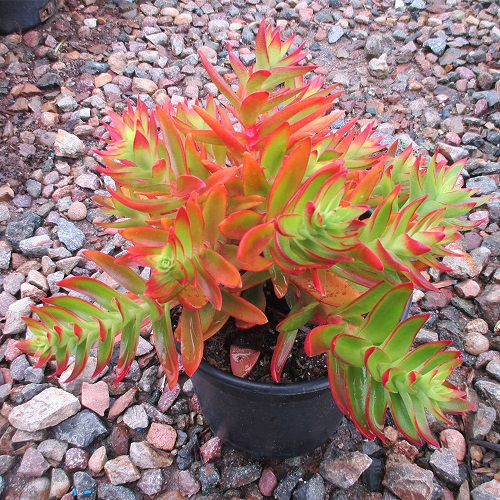
Botanical Name: Crassula capitella ‘Campfire’
Succulents on fire! It is Super attractive because of its bright red color and greens in the center. Surprisingly, this plant can also change its color depending on the availability of sunlight. Although, it is at its best when kept under sunlight and bright spots!
Note: This plant is toxic to pets, so be cautious when planting it around animals.
12. Jelly Bean Sedum
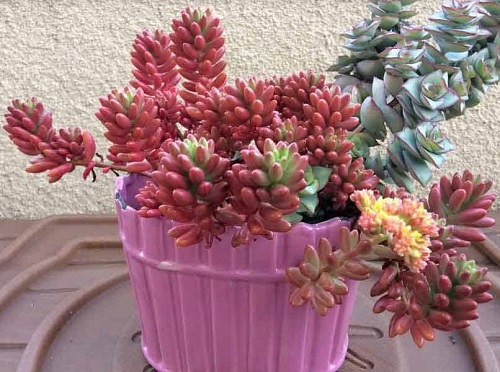
Botanical Name: Sedum rubrotinctum ‘Aurora’
Like most other Sedums the Jelly Bean Sedum is also an adorable succulent. As a matter of fact, the beauty of this Sedum lies in the shape of its leaves which resembles jelly beans. Additionally, it also produces some delicate star-shaped yellow flowers in winter. This plant is also toxic to pets if ingested.
13. Pink Moonstone
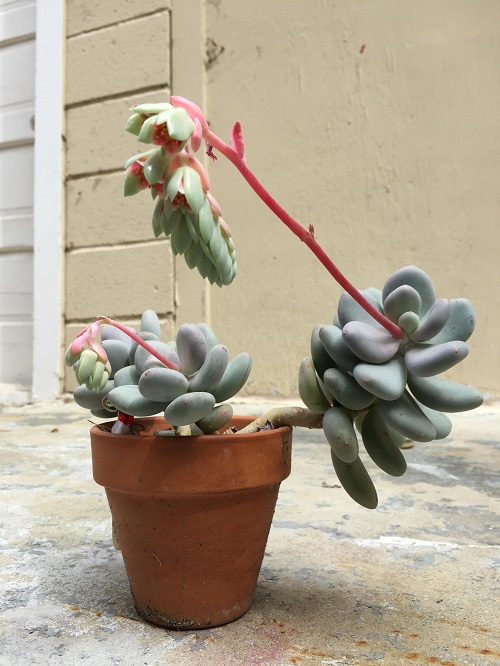
Botanical Name: Pachyphytum oviferum
Not only pink in color, rather this succulent has too many cute colors like purple, light pink, light green, and pastel blue. Above all, this succulent looks like fleshy fruit because of its oval fleshy shape of the leaves. Be cautious as this plant is toxic to pets and humans, too!
14. Tricolor Sedum
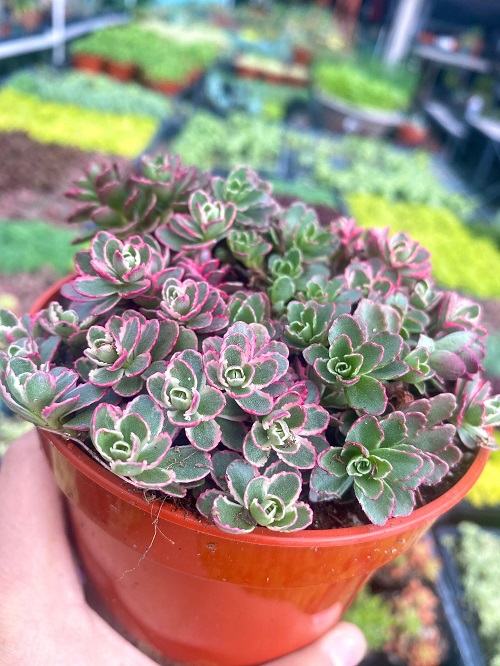
Botanical Name: Sedum spurium ‘Tricolor’
Colorful green leaves with white patterns and pink borders are what make this plant so appealing and colorful! This tricolor succulent grows like small bushes and is best for hanging pots or wall decors. It’s also quite hardy and thrives in full sun.
15. Dragon’s Blood
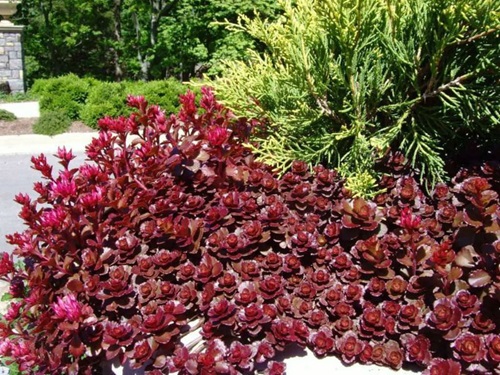
Botanical Name: Phedimus spurius
This colorful succulent gets its name from its blood-red foliage. The leaves in the beginning tend to be deep green with purplish-red margins and later during the autumn season, they transform into a rich wine-red color.
16. Sedeveria Pink Ruby
Botanical Name: Sedeveria Pink Ruby
A hybrid of two succulents, Echeverias and Sedums, this succulent with rosette patterns is one of a kind! It comprises three color variations, from the center to the outer layer of the foliage starting with light green to light green with pink edges, and lastly pink color on the outer layer. It’s also quite compact and does well in containers.
17. Desert Cabbage
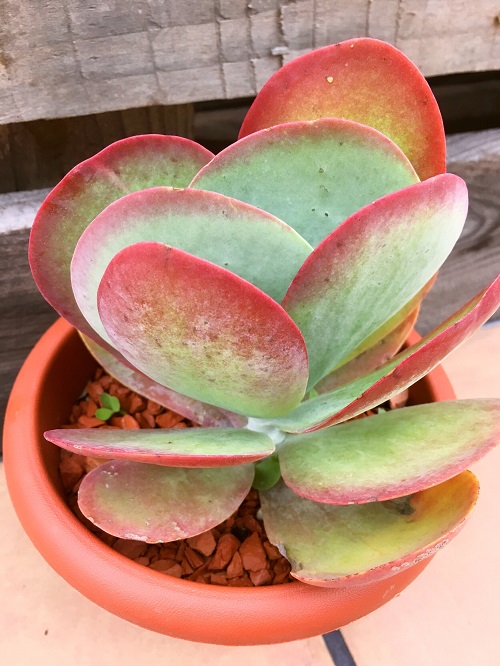
Botanical Name: Kalanchoe thyrsiflora
A colorful cabbage with red and green foliage almost similar to that of Campfire succulents only, not the shape and structure of the plant. But, it is not edible! This plant has big leaves so it looks good in wide pots or bowls. Plus, it blooms with tall spikes of yellow flowers.
18. Lipstick Echeveria
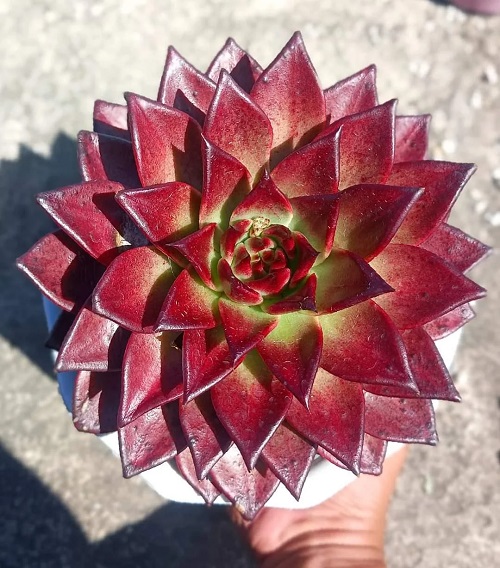
Botanical Name: Echeveria agavoides
Pointy edges with red color on the tips of the foliage are where the name ‘Lipstick’ comes from. This Echeveria is simple yet too pretty. Additionally, these succulents originate from Mexico and can grow up to 6 inches tall and 6-12 inches wide.
19. Fire and Ice Echeveria
Botanical Name: Echeveria subrigida cv. Fire and Ice
Too good to be true! The combination of the foliage colors and the powdery layer on it makes this plant look very unique yet beautiful. The powdery coating also helps protect the plant from intense sunlight. It gives the feeling of red ribbons attached to the edges of the creamy green leaves! Moreover, these large succulents are best for outdoor landscaping!
20. Golden-Toothed Aloe
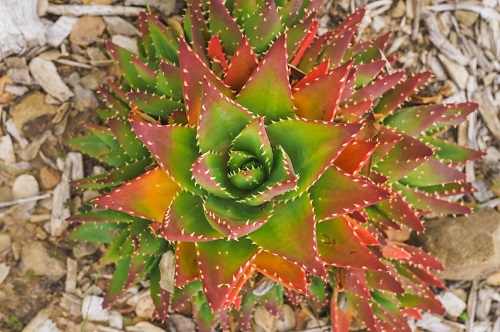
Botanical Name: Aloe nobilis
This aloe resembles Aloe vera and features thick, spiky leaves with golden edges. Although smaller than regular Aloe veras, the colors of this succulent look fantastic for rock garden decor and ground covers. Unlike Aloe vera, this species is mainly ornamental and doesn’t have medicinal properties.
21. Sunset Jade
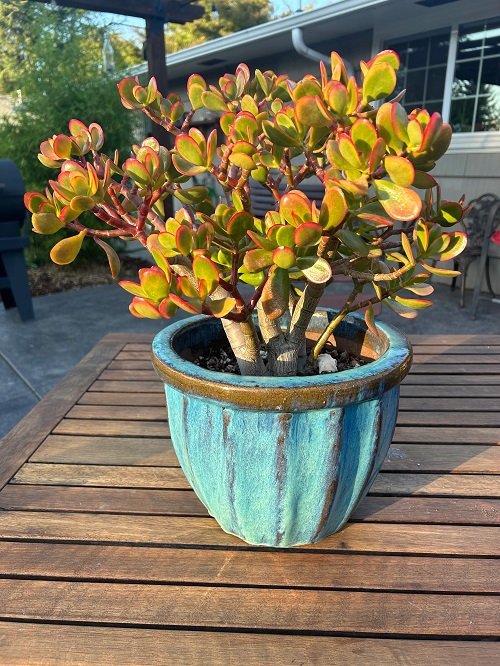
Botanical Name: Crassula ovata
Structured like the Jade plant although with more shiny leaves. The leaves of this plant turn golden-yellow with red edges, creating a sunset-like effect that looks stunning under bright light or sunlight.
22. Morning light Echeveria
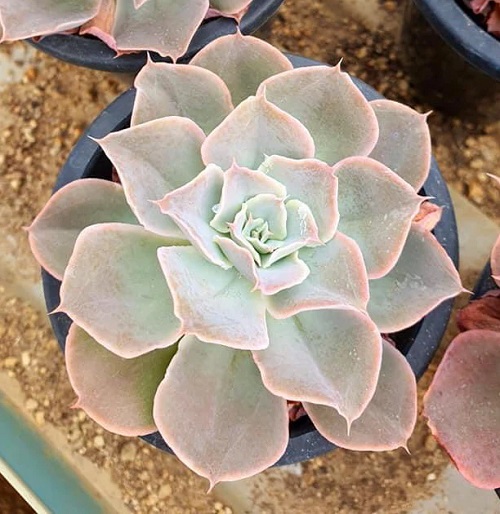
Botanical Name: Echeveria ‘Morning Light’
This Echeveria will undoubtedly capture anybody’s attention. It showcases soft, pastel hues that evoke the gentle colors of dawn with pinkish edges that brighten under sunlight.
23. Houseleek or Live-forever

Botanical Name: Sempervivum tectorum
Live forever succulents live forever! The Latin word ‘Sempervivum’ means alive forever. This colorful succulent has lovely green and purple combinations of tiny rosettes. Moreover, it is a monocarpic succulent but produces small offsets that can detach themselves very easily and can self-propagate, which is why they live forever!
24. Mangave ‘Macho Mocha’
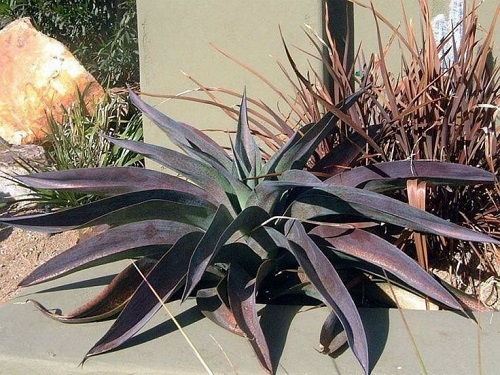
Botanical Name: Mangave x ‘Macho Mocha
The ‘Macho Mocha’ Mangave is known for its broad, gray-green leaves with purple spots, creating a striking, mottled appearance. Additionally, it can grow up to a height of 6 feet and then it looks glorious. It’s a hybrid of Manfreda and Agave, combining the best traits of both plants.
25. Echeveria Perle Von Nurnberg
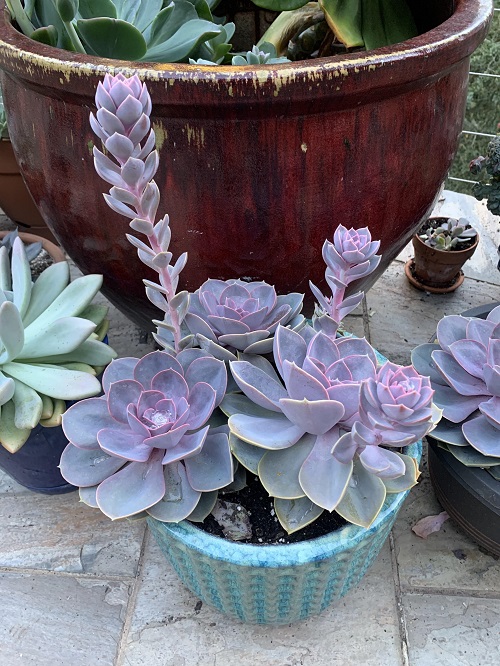
Botanical Name: Echeveria ‘Perle von Nurnberg’
A breathtaking beauty! This popular Echeveria has pink or purple highlights with white powdery dusting. This plant is a hybrid of Echeveria gibbiflora ‘Metallica’ and Echeveria potosina. It’s highly tolerant to a range of growing conditions. This showcases rosettes of soft, lavender-gray leaves with a subtle pink blush which is a plus!
26. Briar Rose Echeveria
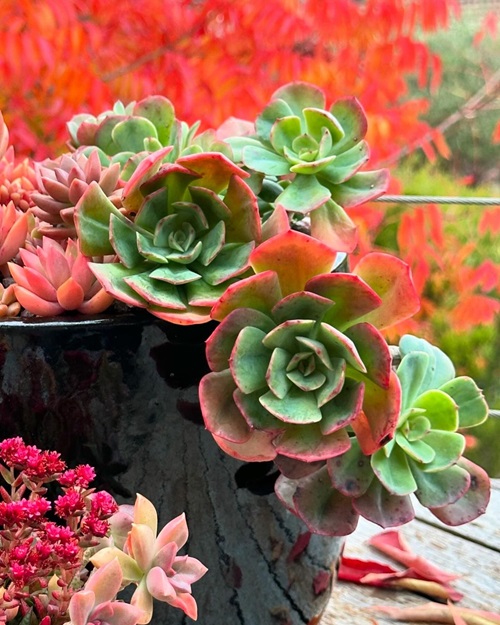
Botanical Name: Echeveria ‘Briar Rose’
With an amazing combination of soft pink or purple edges and a pastel green center. You can see this succulent bloom in clusters from spring to summer. If you don’t believe, just try adding a few to your garden and thank us later!
27. Silver on Red Echeveria
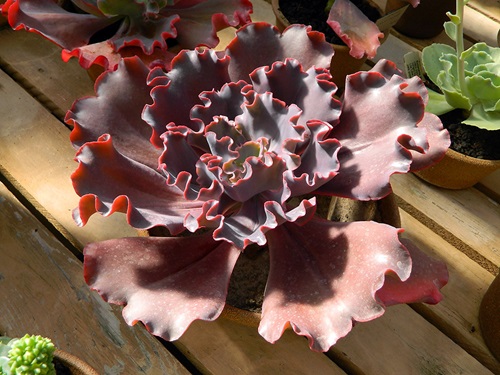
Botanical Name: Echeveria ‘Silveron Red’
One more Echeveria hybrids! Pretty obvious from its name, this coral-like succulent has silver-green-purple leaves with frilled edges in a line or border of red color. Thoughtfully, hybridized in the 1966s by Dick Wright who was a succulent gardener and worked especially with Echeverias.
28. Tiger Aloe
Botanical Name: Gonialoe variegata
An Aloe vera with stripes! The Tiger Aloe has dark green leaves with white, tiger-like stripes. It has beautiful orange flowers and sometimes has salmon, pink or yellow blooms, too. But, it is mildly toxic to pets and humans so it should not be consumed in any way.
29. Ruby’s Necklace
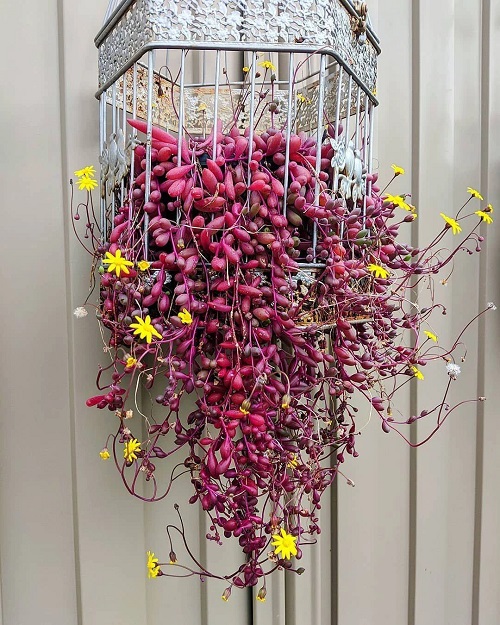
Botanical Name: Othonna capensis
Ruby’s necklace succulent is trailing. Furthermore, the stems of this succulent are adorned with small, bead-like leaves that range from green to bright ruby red with cute yellow blooms. This succulent is great for hanging baskets and is often used in artistic garden designs for its vivid colors.
30. Job’s Beard
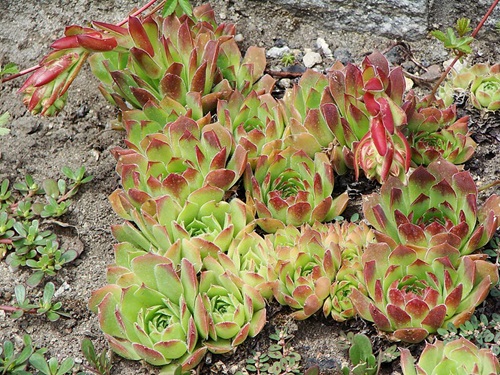
Botanical Name: Sempervivum heuffelii
Job’s Beards are small succulents that form tight rosettes. The cluster gives them a unique and intriguing appearance. This succulent has a mix of red, purple, and green in its foliage, and to see its brightest colors, plant it in a sunny spot. It’s also frost-hardy and can thrive in cold climates.
31. Variegated Strings of Heart
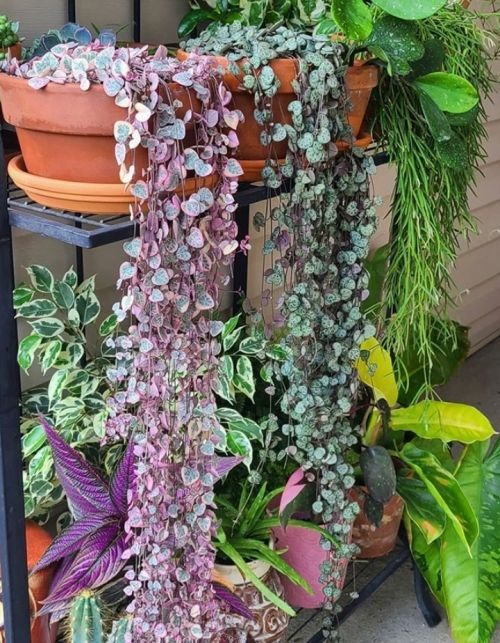
Botanical Name: Ceropegia woodii ‘Variegata’
One more trailing succulent in the list. This variegated Strings of Heart features heart-shaped leaves with pink and white variegation. It has the ability to transform your space and make it super glorious. While not toxic, it may cause an upset stomach if consumed, so handle with care.
32. Little Warty
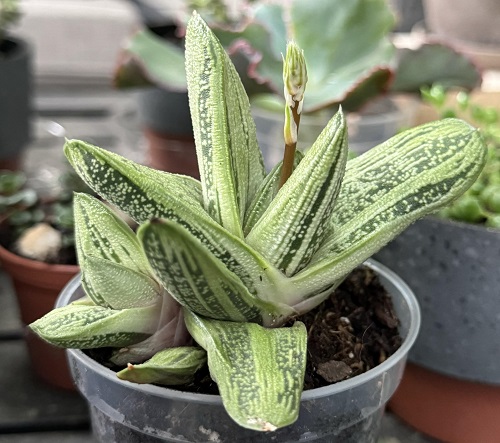
Botanical Name: Gasteria species
One of the rare colorful succulents, the Little Warty is quite a compact succulent that has green and dark green textured leaves with bumpy, warty surfaces. Moreover, it is best for wall decors and table tops.
33. Pulido’s Echeveria
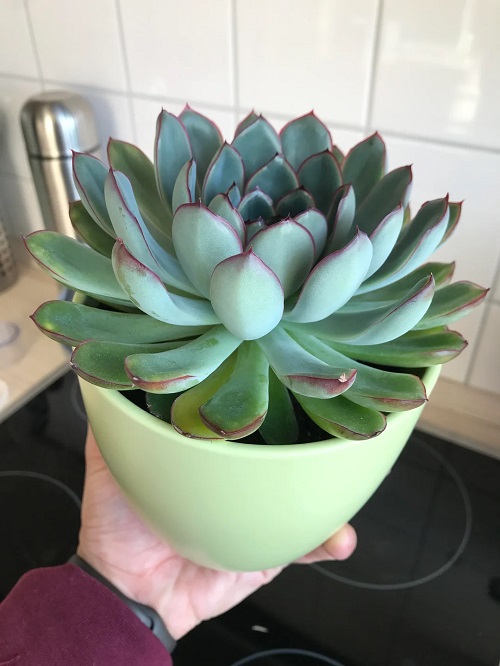
Botanical Name: Echeveria pulidonis
A colorful outdoor succulent, the most unique feature of this plant is its bright green leaves that are so carefully edged in red in a finely detailed line, is like cherry on the cake! Additionally, the bright yellow blooms make the appearance more happening!
34. Chandelier Plant
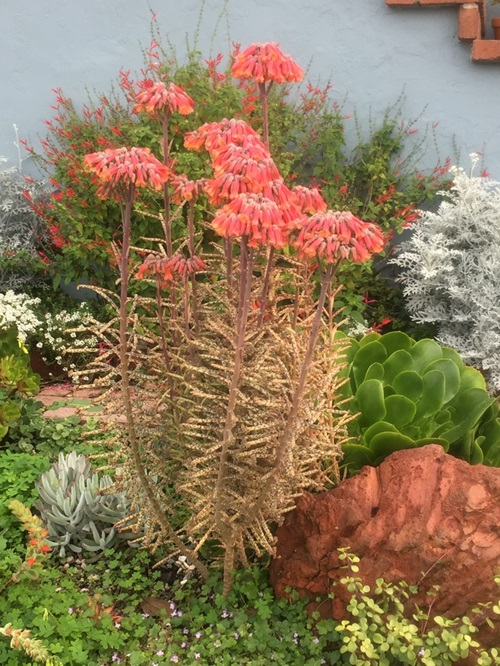
Botanical Name: Kalanchoe delagoensis
A graceful succulent, easy to grow from leaves and stems, the Chandelier Plant has tall, slender stems adorned with tiny, tubular leaves that resemble miniature chandeliers. Again, the notable part is the plant isn’t colorful, however when it’s bell shaped flowers of red, yellow, orange, and white bloom, your garden will attract every eye of passers-by.
Note: This plant is mildly toxic if ingested, so keep it away from pets and small children.
35. Sunrise Succulent
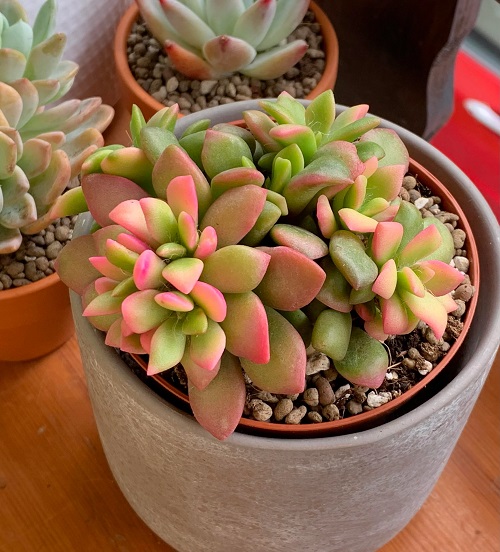
Botanical Name: Anacampseros rufescens
Among many colorful mini succulents, these are truly unique because of their colors. Mostly, these plants have small, fleshy leaves that transition from green to pink and purple, creating a mesmerizing sunrise effect. And which is why these are also known as color-changing succulents!
36. Echeveria Lola
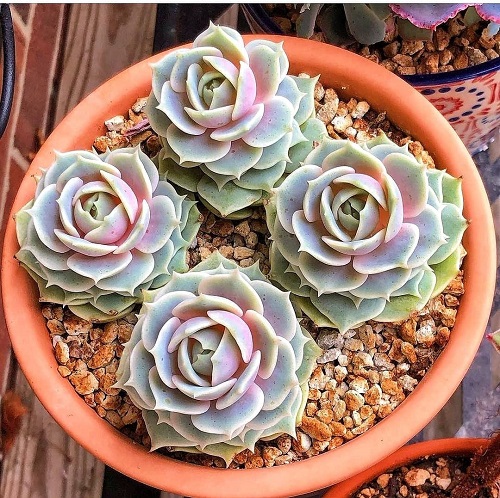
Botanical Name: Echeveria ‘Lola’
Designed in a pale, lavender-gray rosette, the Echeveria Lola is delicately shaped, resembling a flower in full bloom, with a subtle pastel glow. For some reason, it also appears like the color of the moon!
37. Stonecrop
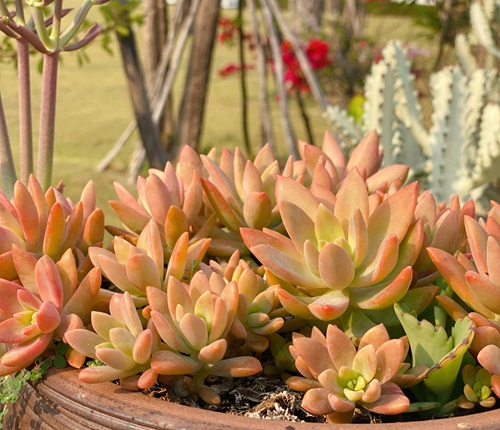
Botanical Name: Sedum nussbaumerianum
Golden-yellow or Orange? Can’t figure it out? It’s a little tough to figure out which shade of yellow or orange it is! This succulent with its bright, coppery leaves, can undoubtedly stand out in any garden, especially when paired with cooler-toned plants.
38. Bittersweet Succulent
Botanical Name: Echeveria ‘Bittersweet’
This Bittersweet Echeveria has soft, pastel shades of purple ranging from pink-green to purple, giving it a bittersweet and delicate appearance. The edge of this succulent looks like the gorgeous frills of a party dress.
39. Echeveria Raindrops Succulent
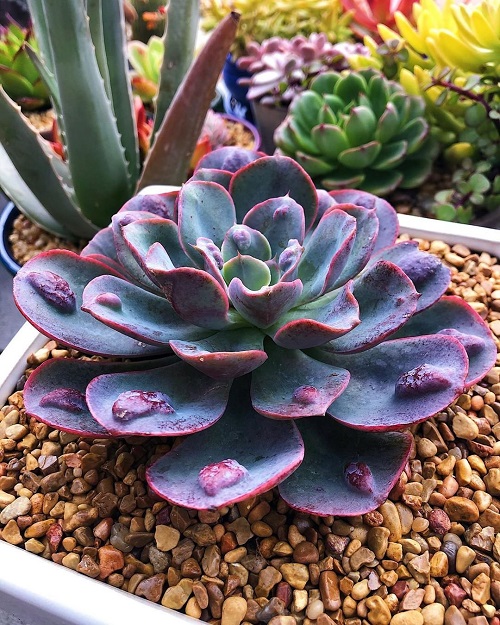
Botanical Name: Echeveria ‘raindrop’
One amazing blue color succulent! With the unique features of this succulent, it has become an obsession of many gardeners. This Echeveria is unique for its raised, raindrop-like bumps on the tips of its bluish-green leaves, giving it an otherworldly look. Plus, these bumps have purple to pink colors.
40. Echeveria Cubic Frost
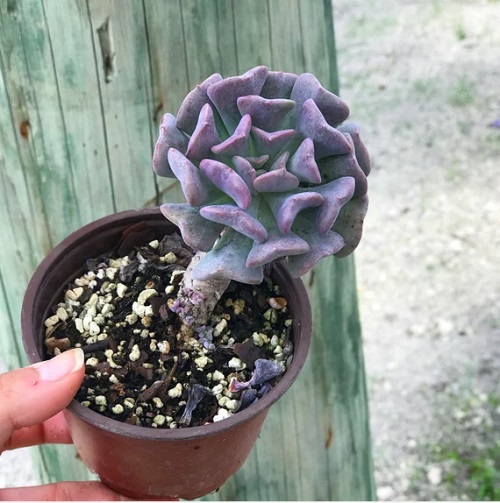
Botanical Name: Echeveria ‘Cubic frost’
Lilac colors are taking away the trend! These lavender-pink-colored succulents have rosette-shaped foliage with a frosty appearance, with curled leaf tips. Overall, a girly-looking plant!
41. Moon Cactus
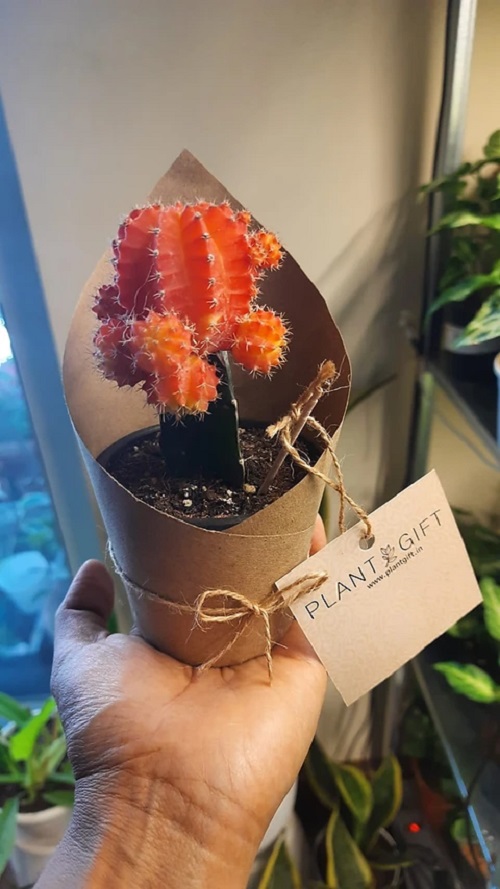
Botanical Name: Gymnocalycium mihanovichii
And the final and the best one is here! The Moon cactus is a pink, cute, and adorable mini succulent! Colorful succulents like these have lots of home decor uses. They look good in any kind of placement and background.
Well, besides all the colorful succulents above, there are many more to be discovered! Nature, on the other hand, keeps on evolving every single day, and due to this many new species are formed with their unique features. So, we would be happy if you would want to add more to this list in the comments section!

